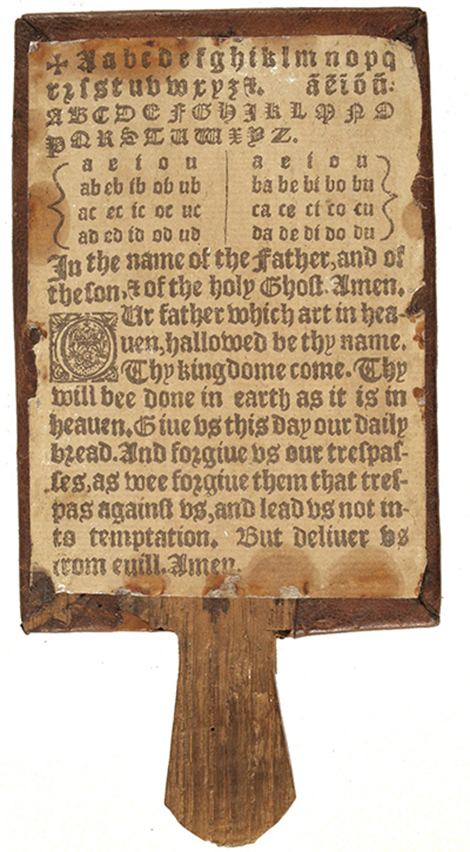 | ||
Similar The New England Primer, The Witch of Blackbird, Emanuel Law Outlines, Wills - trusts - and estates, A Little Pretty Pocket‑Book | ||
abc van hornbook tot abc prentenboek
A hornbook is a book that serves as primer for study. The hornbook originated in England as long ago as 1450, or earlier. The term has been applied to a few different study materials in different fields. In children's education, in the years before modern educational materials were used, it referred to a leaf or page displaying the alphabet, religious materials, etc., covered with a transparent sheet of horn (or mica) and attached to a frame provided with a handle.
Contents
- abc van hornbook tot abc prentenboek
- Life as a child in the 18th century
- Use in United States legal education
- Use in early childhood education
- In art entertainment and media
- References
Life as a child in the 18th century
Use in United States legal education
In United States law, a hornbook is a text that gives an overview of a particular area of law. A law hornbook is a type of treatise, usually one volume, which could be a briefer version of a longer, multi-volume treatise. Students in American law schools often use hornbooks as supplements to casebooks.
Use in early childhood education
In childhood education from the mid 16th century to the late 19th century, a hornbook was a primer for children consisting of a sheet containing the letters of the alphabet, mounted on wood, bone, leather, or stone and protected by a thin sheet of transparent horn or mica. Sometimes the sheet was simply pasted against the slice of horn. The wooden frame often had a handle, and it was usually hung at the child's girdle. The sheet, which was first of vellum and later of paper, contained first a large cross, from which the horn-book was called the Christ Cross Row, or criss-cross-row. The alphabet in large and small letters followed. The vowels then formed a line, and their combinations with the consonants were given in a tabular form. The usual Trinitarian formula – "in the name of the Father and of the Sonne and of the Holy Ghost, Amen" – followed, then the Lord's Prayer, the whole concluding with the Roman numerals.
In art, entertainment, and media
Have seen her glued unto that piece of cedar,
That fine well-timber'd gallant; and that here
The letters may be read, through the horn,
That make the story perfect.
